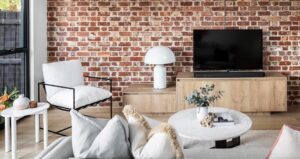Embarking on the journey of designing a custom home is an exciting prospect. The idea of crafting a space tailored precisely to your needs, desires, and dreams holds an allure that few other endeavours can match. However, amidst this excitement lies a daunting challenge: where do you even begin?
The blank canvas of a custom home can be both thrilling and overwhelming. With infinite possibilities stretching before you, it’s natural to feel a sense of paralysis at the outset. How do you translate your vision into tangible plans and blueprints? How do you ensure that every detail reflects your personality and lifestyle? Where do you even start?
If you find yourself grappling with these questions, you’re not alone. Many individuals embarking on the custom home design process experience a similar sense of uncertainty. But fear not, for navigating this labyrinthine journey begins with a few key steps:
1. Define Your Vision
Take the time to envision your ideal home. Consider your lifestyle, preferences, and priorities. What architectural styles appeal to you? What features are non-negotiable? Are there any specific design elements or amenities you’ve always dreamed of having? By clarifying your vision, you lay the groundwork for the design process.
2. Find Inspiration
Draw inspiration from various sources to help refine your vision. Browse design magazines, scour websites like Pinterest and Houzz, visit model homes, and take note of architectural details that resonate with you. Create a mood board or scrapbook to compile your ideas and inspirations, allowing you to pinpoint recurring themes and preferences.
3. Set a Budget
Establishing a realistic budget is crucial before delving into the design process. Consult with financial advisors, architects, and most importantly builders to determine the cost parameters of your project. Be transparent about your budgetary constraints, as this will guide the design decisions and prevent you from overextending financially.
4. Select a Design Team
Building your dream home requires a skilled team of professionals, including architects, designers, and builders. Take the time to research and interview potential candidates, seeking individuals or firms with a track record of excellence and compatibility with your vision. Communication and collaboration are key, so choose partners who understand your goals and preferences.
5. Prioritise Functionality
While aesthetics is undoubtedly important, don’t overlook the practical aspects of home design. Consider factors such as layout, flow, spatial organization, and future resale value. Your home should not only be visually stunning but also functional and adaptable to your evolving needs over time.
6. Embrace Flexibility
Flexibility is essential in the custom home design process. Be prepared to adapt and compromise as the project evolves. Unexpected challenges may arise, requiring adjustments to your initial plans. Maintain an open mind and trust in the expertise of your design team to navigate these hurdles effectively.
7. Take Your Time
Designing a custom home is a marathon, not a sprint. Resist the urge to rush through the process in pursuit of immediate gratification. Allow yourself the luxury of time to deliberate, refine, and perfect every aspect of your design. Remember, this is your dream home—worth the investment of patience and attention to detail.
In conclusion, while the prospect of designing a custom home may seem daunting at first, it’s a journey well worth undertaking. By clarifying your vision, seeking inspiration, setting a budget, assembling a skilled team, prioritizing functionality, embracing flexibility, and taking your time, you can navigate the complexities of the design process with confidence and clarity. And remember, amidst the uncertainties and challenges, the end result—a home uniquely tailored to your desires—will make every step of the journey worthwhile.
So, if you’re ready to turn your dream home into a reality, follow these steps to embark on your custom home design journey with confidence. With careful planning, thoughtful consideration, and the right team by your side, your vision for the perfect home can become a breathtaking reality.


Advantages of Using Woodsman Projects
- Local Expertise in Melbourne
- Customisation to Suit Unique Melbourne Lifestyles
- Superior Quality Craftsmanship
- Clear Communication and Collaboration
- Commitment to Customer Satisfaction
- Strong Local Reputation & Knowledge of Local Suppliers and Materials
- Extensive Portfolio of Successful Projects in Melbourne
- Adherence to Sustainable Building Practices
- Dedication to Timely Project Completion










